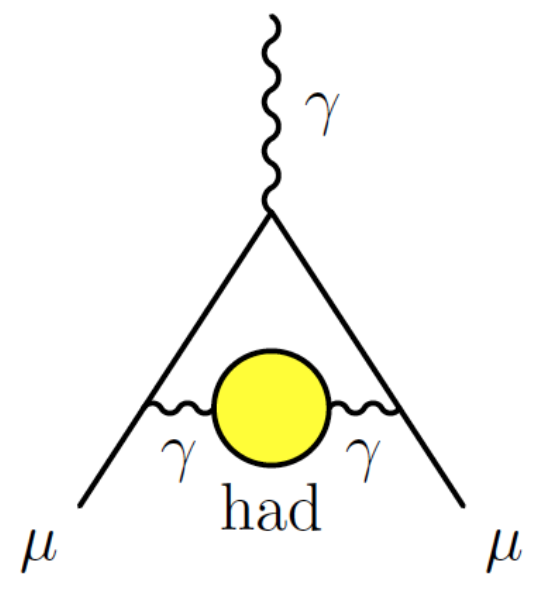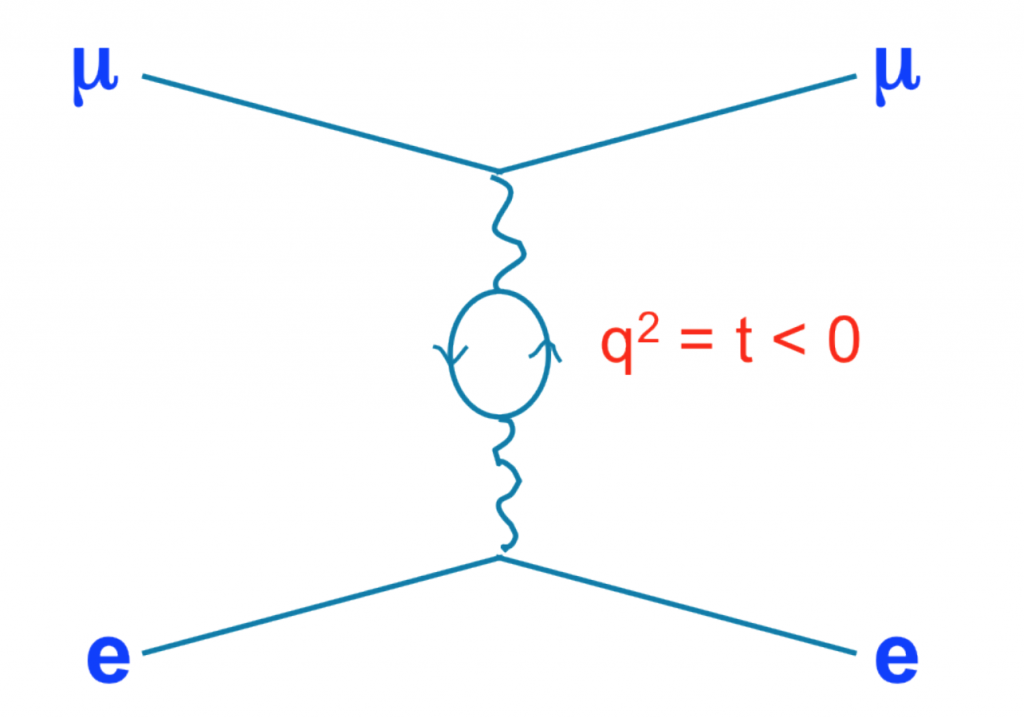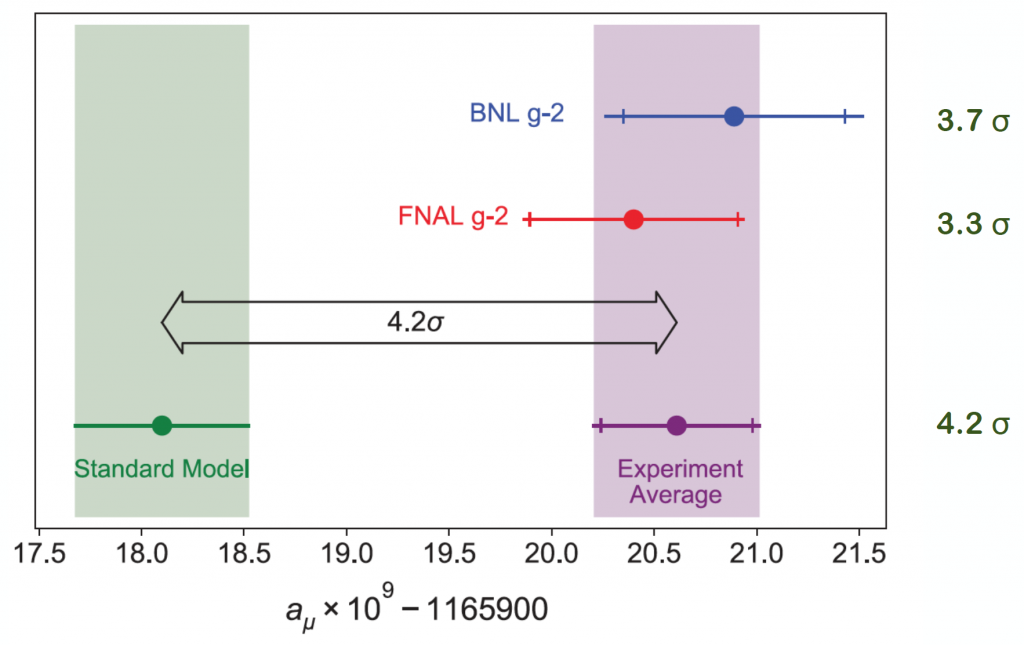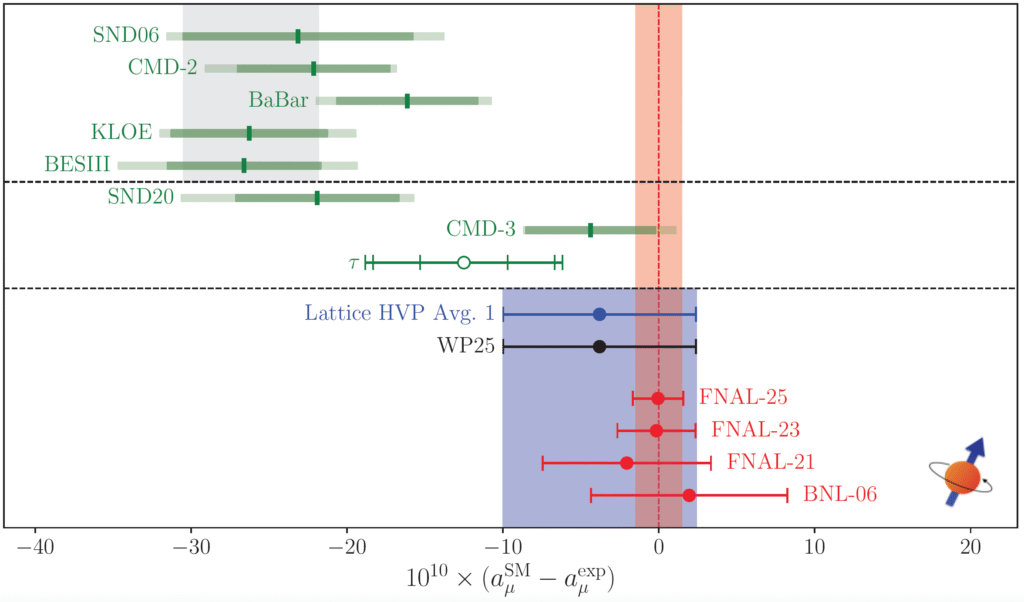The MUonE project
(MUon ON Electron elastic scattering)

The MUonE experiment aims at an independent and precise determination of the leading hadronic contribution to the muon anomalous magnetic moment aμ=(gμ-2)/2, based on an alternative method, complementary to the existing ones.

The method needs the measurement of the effective electromagnetic coupling in the space-like region at low momentum transfer. This can be achieved by measuring with unprecedented precision the shape of the differential cross section of μ-e elastic scattering, using the intense muon beam available at CERN, with energy of 160 GeV, off atomic electrons of a light target, as described in the original publication.
The muon anomalous magnetic moment is one of the most precisely measured quantities as well as one the most precisely calculable in the Standard Model, that’s why it constitutes a stringent test of the theory. For the last twenty years the BNL measurement has been pointing to a significant discrepancy from the theory prediction. In 2021 the first result from the FNAL g-2 experiment confirmed the previous measurement, bringing to 4.2σ the deviation from the SM prediction contained in the 2020 theory white paper.

There have been hypotheses trying to explain this deviation as a quantum effect of new exotic particles, however it is still possible that it result from a systematic error in the theoretical calculation. The dominant theory uncertainty is related to the hadronic contribution to the vacuum polarization, which is not calculable in perturbation theory. Its leading order contribution (LO-HVP) is usually determined by a data-driven dispersive approach, using the measurements of low-energy hadron production cross section in e+e– annihilation. In contrast with this method, a Lattice QCD calculation of the LO-HVP contribution, found a reduced discrepancy with the measurement, in tension with the data-driven estimate. The final measurement of the FNAL g-2 collaboration with full statistics confirmed the previous ones with a four-fold error reduction with respect to the BNL measurement. In the future an independent measurement will be pursued by the experiment at J-PARC.
A recent update of the lattice QCD calculation with improved precision confirmed a small deviation of 0.9σ from the measurement. The updated theory white paper has incorporated the new lattice result, but the picture is still to be clarified, given the discrepancies with the existing data-driven estimates and considering that the theory error is much larger than the experimental one.

The MUonE project was conceived during the workshop “Physics Beyond Colliders”, held at CERN in late 2016, and the proposal was published in the European Physical Journal C soon after. The proposed apparatus is a sequence of detection stations, each one made of a passive element serving as target and active planes made of silicon microstrip detectors for tracking, with length of 1 meter and transverse dimensions of about 10 cm. The layout foresees an array of 40 such stations, followed by an electromagnetic calorimeter and a muon detector at the end.


Dedicated beam tests were carried out at CERN. In 2017 a first beam test was devoted to the study of multiple scattering on the material, which affects the observable angles of the measured tracks. Its results have been published in the Journal of Instrumentation. In 2018 a second test was carried out aimed to study the selection of elastic events and is also published in Journal of Instrumentation. In June 2019 the MUonE project was submitted for approval to the CERN SPS Committee with the Letter-of-Intent. The basic unit chosen for the detector is the module developed by the CMS collaboration for the upgrade of their Outer Tracker. These sensors, together with their trigger and readout electronics, are found to have adequate specifics.

CERN approved a first Test Run, which was carried out with a couple of tracking stations and a prototype calorimeter in August-September 2023. Continuous readout at 40 MHz was achieved for long runs, recording 350 TB of raw data, providing about 108 candidate elastic scattering events. The final test of a scaled version of the complete apparatus has been carried out in Summer 2025, with a setup comprising of three tracking stations, electromagnetic calorimeter, muon detector, timing detector and the beam momentum spectrometer, as described in the Phase-1 Proposal. For this run, data from all the components were integrated in a newly designed DAQ, with an online selection based on hit patterns in the tracking stations, reducing the rate of recorded events to few hundred KHz. The data analysis is on-going.
